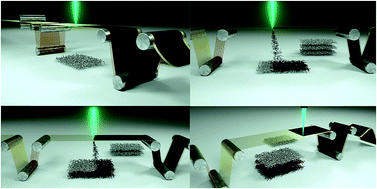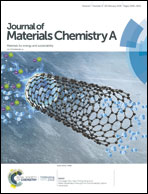Abstract
Consumer grade supercapacitors as power supply resources require outstanding electrode materials with large conductivity, high durability and retention rates, as well as large capacity. Graphene is a promising functional material as an electrical double layer capacitance electrode due to its large surface area, high chemical stability and moderate conductivity. However, the existing graphene synthesis methods, including CVD and chemical exfoliation, are limited to lab scale production. Although laser induced graphene has demonstrated outstanding performance as an electrode material for microsupercapacitors, its difficulty to attach to the metallic current collector limits its application as a large capacity electrode material. Herein, laser induced forward transfer of graphene is developed for additively depositing laser induced graphene onto nickel foam as a composite electrode. The laser annealing enhanced the lattice matching between the extended Basal plane of graphene and Ni (111) resulting in its high electrical conductivity (359 712 S m−1), high retention rate (over 98% capacitance retention after 10 000 cycles), and large areal specific capacitance (995 mF cm−2) and power density (9.39 mW cm−2). The assembled supercapacitors with these additively printed electrodes can work as a USB charger with a stable 5 V output voltage, for charging smart phones and other smart devices.



 Please wait while we load your content...
Please wait while we load your content...